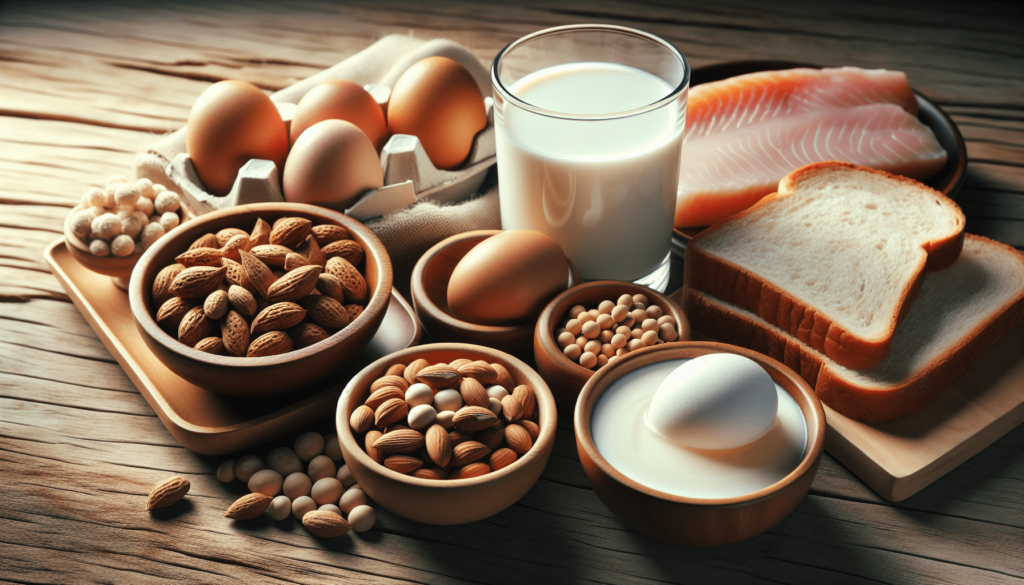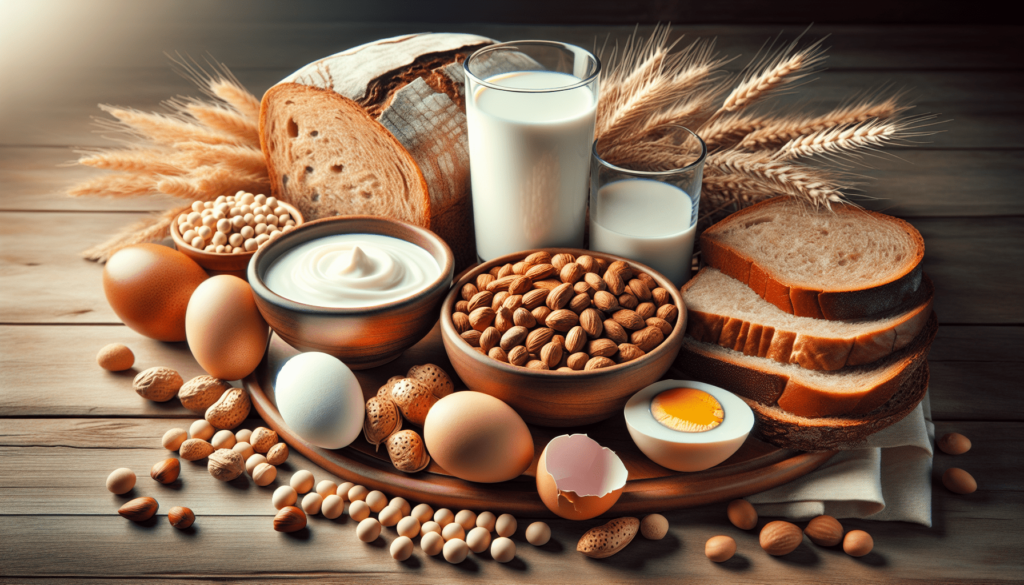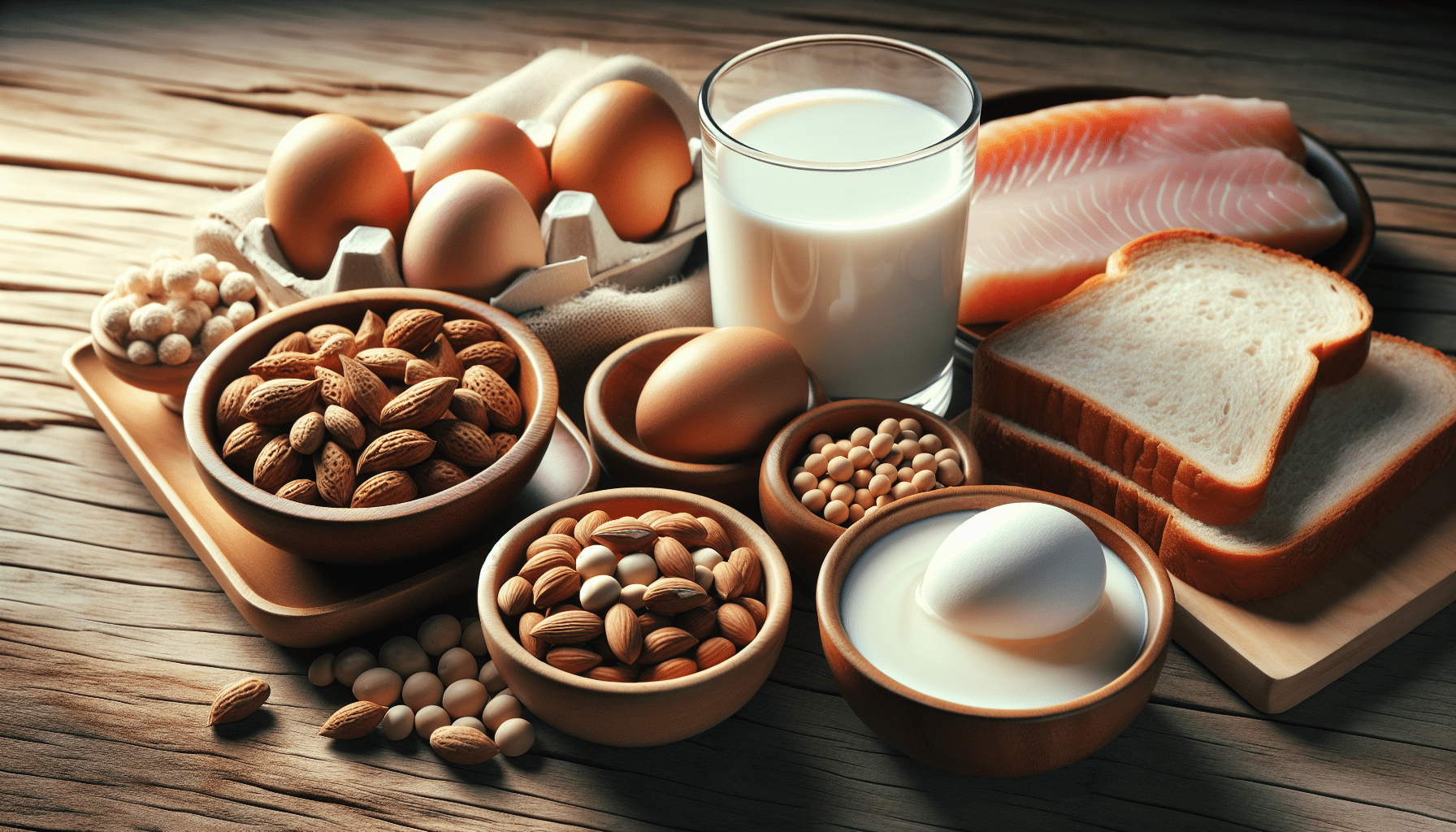Have you ever wondered which foods might be causing those unexpected allergic reactions in your child? It’s an important question because food allergies can be a source of significant worry for many parents. In today’s world, where food variety is abundant, it’s vital to know which common foods are more likely to trigger allergies in children. Understanding these allergens can help you avoid unwanted reactions and keep your child safe and healthy.

Understanding Food Allergies in Children
Food allergies are an abnormal response by the immune system to certain foods. The body’s immune system mistakes a harmless substance, like a specific protein in food, as a threat and overreacts to it. This response can cause a variety of symptoms, some of which can be severe or even life-threatening. While any food can potentially cause an allergy, a small number of foods are responsible for most allergic reactions in children.
Symptoms of Food Allergies
Food allergy symptoms can range from mild to severe. They can appear immediately or up to several hours after consuming the allergen. Common symptoms include hives, stomach pain, diarrhea, difficulty breathing, swelling around the lips or eyes, and anaphylaxis—a potentially life-threatening condition requiring immediate medical attention. It’s important to recognize these symptoms early and take appropriate action.
Prevalence of Food Allergies
Food allergies are quite common in children, affecting roughly 6 to 8 percent of those under the age of three, and can sometimes carry into adulthood. The incidence appears to be increasing, which underscores the need to be aware of the common food allergens and how they can be managed.
The Big Eight: Common Food Allergens
There are eight foods known as the “Big Eight,” which account for about 90% of all food allergy reactions. It’s helpful to familiarize yourself with these foods and understand potential alternatives, as they are often ingredients in a wide variety of recipes and food products.
1. Milk
Milk allergy, more common in infants and young children, can cause reactions such as hives, wheezing, vomiting, and digestive issues. It’s different from lactose intolerance, which doesn’t involve the immune system and causes discomfort but is not life-threatening. If your child has a milk allergy, watch out for unexpected sources like processed meats and certain medications.
2. Eggs
Egg allergy, usually detected in childhood, can provoke reactions ranging from skin inflammation to severe anaphylaxis. Eggs are a common ingredient in many foods, including baked goods, pasta, mayonnaise, and even some vaccines. If you suspect an egg allergy, be diligent about checking labels and exploring egg substitutes in cooking and baking.
3. Peanuts
Peanut allergies can be particularly dangerous, often leading to severe reactions. They’ll frequently remain lifelong and require constant vigilance regarding food labels. Cross-contact, where a tiny amount of peanut protein accidentally gets into another food, is a common issue. Families often need to become experts in reading food labels and talking to restaurant staff about food preparation.
4. Tree Nuts
Like peanuts, tree nuts can cause serious allergy reactions. They include almonds, walnuts, cashews, pistachios, and others. The proteins in these nuts are similar enough that individuals allergic to one type may react to others, so many doctors recommend avoiding all tree nuts if your child is allergic to any.
5. Soy
Soybeans, a common allergen, are found in many foods, including soy milk, soy sauce, and tofu. Many processed foods also contain soy. While some children outgrow a soy allergy, it’s crucial to be aware of soy’s many names on ingredient lists—like lecithin, a common emulsifier.
6. Wheat
Wheat allergies, which are different from celiac disease or gluten intolerance, can cause a range of allergic reactions. Wheat is found in many foods, from obvious candidates like bread and pasta to less expected ones like sauces and processing aids. Alternatives such as rice, corn, and quinoa can be part of a wheat-free diet.
7. Fish
Fish allergies are more common in older children and adults but can begin in early childhood. Many people with fish allergies are advised to avoid all types of fish due to the risk of cross-contamination in restaurants and fisheries. Fish is often an ingredient in sauces and dressings, making it essential to scrutinize food labels carefully.
8. Shellfish
Shellfish, such as shrimp, crab, and lobster, can cause serious allergic reactions. As with fish, a shellfish allergy often persists into adulthood and requires attentive avoidance of hidden sources—such as Asian cuisines where shellfish is a common ingredient.
Beyond the Big Eight: Other Potential Allergens
Besides the major allergens, children can also be allergic to a variety of other foods. Some of these include:
Sesame
Sesame seeds and sesame oil are increasingly recognized as significant allergens. They’re found in products like bagels, tahini, and certain snack foods. Many children do not outgrow sesame allergies, making it important to learn about foods that commonly contain sesame.
Mustard
Mustard is one of the lesser-known allergens but can still provoke substantial reactions. It’s used in condiments, sauces, and salad dressings. Those with a mustard allergy may need to avoid related spices such as mustard greens, as well.
Corn
Though less common, corn can trigger allergic reactions. Corn derivatives are prevalent in many processed foods, making it crucial to identify them by names like corn syrup or cornstarch when managing this allergy.
Gelatin
Gelatin allergies, although rare, can develop in children and represent a challenge due to gelatin’s presence in many desserts, marshmallows, and even certain vaccines. It’s important to find suitable alternatives and consult healthcare providers regarding vaccines and medications.
Managing Food Allergies in Children
Living with food allergies requires careful management to prevent reactions, ensure nutrition, and maintain a positive outlook for the child and the whole family. Here are some strategies:
Label Reading
Become adept at reading food labels. Food allergen labeling laws require that the “Big Eight” allergens are clearly listed on packaged foods. Being familiar with various names for allergens is vital for avoiding them.
Meal Planning and Alternatives
Adaptation in meal planning is crucial. Learn about alternative ingredients and recipes that can help provide balanced nutrition without allergens. Engaging children in meal preparation can also empower them to make safe food choices.
Communication
Effective communication is key—inform caregivers, teachers, and friends about your child’s allergies. Provide action plans and EpiPens if necessary, and ensure those around your child know the signs of a reaction and how to respond.
Educating Your Child
As your child grows, teach them about their food allergies. Encourage them to ask questions about food ingredients and to be cautious about sharing food with friends. Instilling confidence and awareness helps them navigate situations independently as they get older.

The Role of Healthcare Professionals
Consulting with healthcare providers is essential when managing food allergies. An allergist can conduct tests to identify specific allergies and provide guidance on managing them. Periodic follow-ups can help track changes or improvements in your child’s condition.
Allergy Testing
Allergy testing through skin prick tests or blood tests can confirm allergic sensitivities and aid in creating a personalized management plan. These tests can sometimes predict whether a child might outgrow a particular allergy.
Developing an Allergy Action Plan
Work with a healthcare provider to create a detailed allergy action plan. This plan should include steps to take if an allergic reaction occurs and when to use medications like antihistamines or epinephrine injectors (EpiPens).
Coping with the Emotional Impact
Food allergies can affect more than just physical health—they can impact social interactions and emotional well-being. It’s important to address these aspects too.
Normalizing Life with Allergies
Help your child see their allergies as just another part of who they are. Encourage participation in activities and social events by planning ahead and working with organizers to ensure safe food options are available.
Support Groups
Join food allergy support groups. Connecting with other families facing similar challenges can provide comfort and practical advice for managing day-to-day life with allergies.
Building Confidence
Focus on acquiring skills and knowledge that empower your child to manage their allergies confidently. Celebrate milestones like learning to read labels, using medical devices correctly, and advocating for themselves.
Conclusion
Understanding common foods that trigger child allergies is crucial for preventing reactions and maintaining your child’s health and happiness. By learning more about allergens, adopting effective management strategies, and working closely with healthcare professionals, you can help your child live a safe and fulfilling life, despite the challenges of food allergies. Remember, being informed is the best tool you have in supporting your child’s journey with food allergies.
